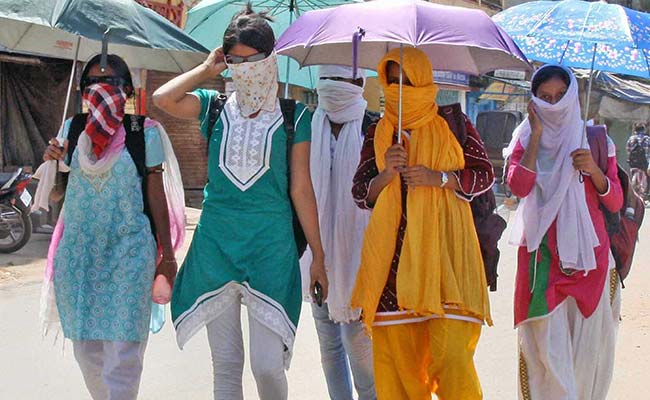
India, along with Pakistan and Bangladesh, could face unsurvivable temperatures and deadly heatwaves within the next eight decades, warns a study by the researchers at the Massachusetts Institute of Technology. The areas likely to be hardest hit by the year 2100 are north India, Bangladesh and southern Pakistan, home to nearly 1.5 billion people. In the last four years, over 4,246 people in India have died due to severe weather conditions. To deal with the rising temperatures, the Indian government is trying to expand access to electric power, in part to cope with rising heat, and aims to connect all homes by 2019.
By 2100, nearly 70 percent of India's population could be exposed to extreme combinations of heat and humidity. Currently, about 2 percent of India's population is sometimes exposed to such conditions.
The latest research is based on recent research showing that hot weather's most deadly effects for humans comes from a combination of high temperature and high humidity, an index which is measured by a reading known as wet-bulb temperature.
The year 2015 witnessed 2,081 deaths due to severe heatwave while 549 people died in 2014. In 2013, the heatwave conditions killed 1,443 people, of which the unified Andhra Pradesh state registered 1,393 casualties.
Ahmedabad has already introduced a heat action plan - South Asia's first early warning system against extreme heatwaves. Authorities in the city of 5.5 million have mapped areas with vulnerable populations and set up "cooling spaces" in temples, public buildings and malls during the summer.
Another study, by the University of California, had said in June that India is now on a path to between 2.2 and 5.5 degrees Celsius of temperature rise by the end of the century.
Last year, nearly 1,600 people died due to erratic weather conditions in India, of which 557 casualties were to severe heatwave, according to the Ministry of Earth Sciences.
The study said India and China remain two countries where emission rates of greenhouse gases continue to rise. I think these results pose a dilemma for countries like India. Global warming is not just a global problem -- for them, they will have some of the hottest spots on the planet," said MIT professor Elfatih Eltahir, in the paper in the journal Science Advances.
Key agricultural land in the Ganges and Indus river basins will be particularly hard-hit, reducing crop yields and increasing hunger in some of the world's most densely populated regions, researchers said.
By the end of the 21st century, wet-bulb temperatures rise from about 31 degrees Celsius to 34.2 in due a combination of high temperature and high humidity.
The Persian Gulf may become the region of the worst heatwaves on earth, north India is a close second, and eastern China, also densely populated, is third, according to Elfatih Eltahir, from MIT.
(With inputs from agencies)

